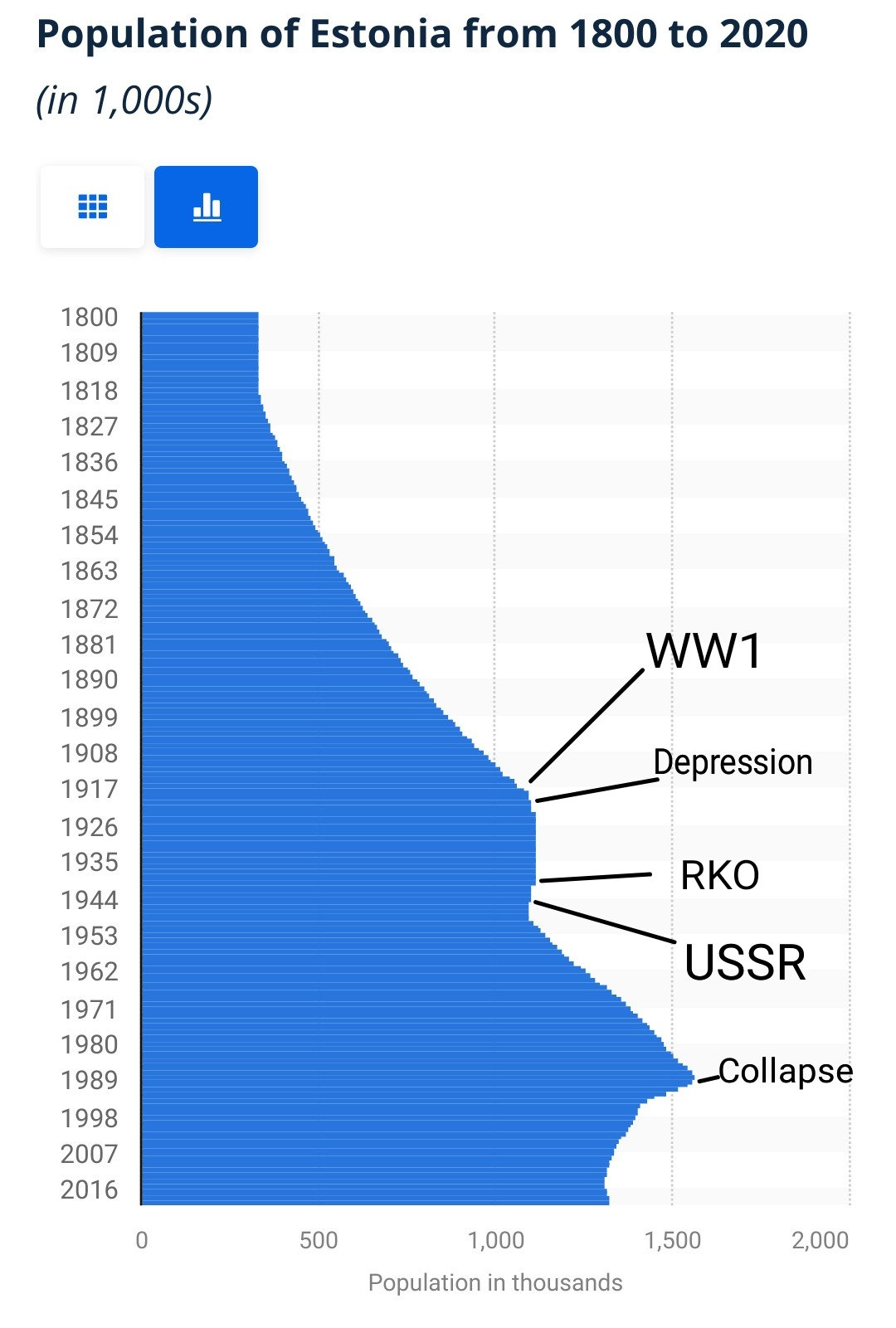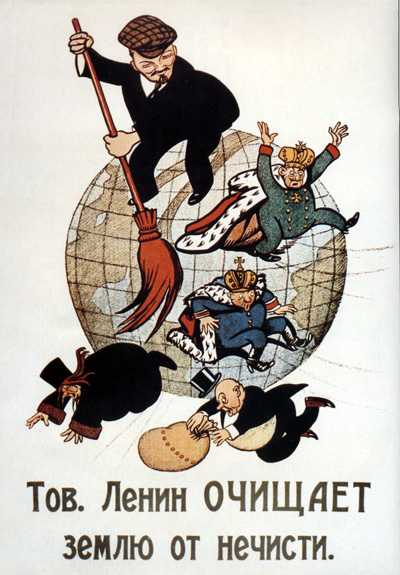So I was reading through @sunaurus@lemm.ee 's comment about Estonian demographic history and felt intrigued by some of the claims, so I did a teeny tiny bit of digging to see what I could find. So here goes:
-
The Estonian population expanded rapidly during the industrial revolution right up to the 1910s.
-
World War 1 and the Great Depression manage to suppress population growth for the next decade.
-
Nazi occupation of Estonia (marked RKO) coincides with WW2. The vast majority of ethnic Jews flee to the USSR, and those whl stayed behind were exterminated. The nazis and their Estonian collaborators built concentration camps. This coincides with a dip in the graph.
-
After WW2, Estonia is back under the USSR. The first Estonian SSR was established in 1940-1941 when nazi occupation started. After some lag, the population begins climbing on the same curve it did before. The population of the country peaks in 1989.
-
20000 people were deported to Russia
-
The nazis aimed to remove 50% of the population on paper but only had 4yrs to do so. This means using concentration camps on ethnic Estonians for germans to take their homes/land as in palestine today.
-
20k is not the same as sunaurus's 20% claim, not even close. 20% does however match the proportion of modern estonians who are russian. The obvious conclusion one can gather from this comparison is that this is not dissimilar to Great Replacement propaganda. The assumption here is that ethnic Russians are taking up Estonian space, because the evidence points to massive population growth under the ussr rather than a contraction like the one that occurred with German occupation.
Immigration was highest during that huge growth period, so I'm curious where all those excess deaths and gulags occurred to have not slowed or stopped said growth. It sounds to me like this person is just intimidated by people they consider foreign.


I don't make the assumption that every single person was forced. As I said, I think it serves no purpose to argue over what percentage was forced (even though it's pretty clear that the majority of that number was indeed repressed).
By the way, there has been significant research and investigation done into the exact extent of losses and repression during the occupation (both by nazis and soviets). If you're interested, have a look at this report. Quoting from the foreword:
Also, if you read the report, please read it with the awareness that Estonia was a neutral country before being invaded by the soviets.
@trot@hexbear.net has covered the issues with that report in more detail (abortion is repression? really begs the question of repression of what, against who), but I'll add that it was commissioned after the newly-independent Estonia repressed (declared illegal) the Communist Party of Estonia.
I should have probably made it more clear that all the excerpts come from unrelated parts of the text. The one on abortion is from a section on health problems "resulting" from Soviet occupation, not from the section of the above excerpt. Nevertheless, considering the content of the rest of the report, it's most likely implying that the act of abortion is itself a problem.
Sure, but omitting nuance by default allows for painting a black-and-white picture of history, which helps fabricate a justification for nationalism. We hopefully all understand what that leads to and who benefits from it.
I will read it, although honestly I am not really confident about the reliability of the report so far, judging by the following (mutually unrelated) excerpts with the most interesting parts highlighted:
All in all, it reads more like fascist-leaning propaganda than a scientific report.